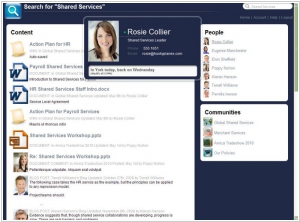Kofax vs OpenText
June 12, 2023 | Author: Michael Stromann
6
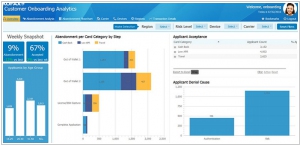
Kofax Intelligent Automation software platform helps organizations transform information-intensive business processes, reduce manual work and errors, minimize costs, and improve customer engagement. We combine RPA, cognitive capture, process orchestration, mobility and engagement, and analytics to ease implementations and deliver dramatic results that mitigate compliance risk and increase competitiveness, growth and profitability.
Kofax and OpenText are prominent players in the field of intelligent automation and content management, but they offer different capabilities and solutions. Kofax specializes in intelligent capture and process automation, focusing on extracting data from documents, automating document-intensive workflows, and improving information governance. Their solutions include features such as optical character recognition (OCR), document classification, and data extraction. OpenText, on the other hand, is a comprehensive enterprise content management (ECM) platform that encompasses a broader range of capabilities. Their offerings span content management, collaboration, business process management, and information governance, providing a holistic approach to managing content and processes across the organization. OpenText's ECM platform supports document management, records management, digital asset management, and more. While Kofax excels in document-centric automation and intelligent capture, OpenText offers a comprehensive suite of ECM capabilities that cover a broader scope of content and process management needs.
See also: Top 10 RPA Software
See also: Top 10 RPA Software
Kofax vs OpenText in our news:
2022. OpenText acquires Micro Focus for $6B

ECM giant OpenText is acquiring Micro Focus for a total value of $6 billion. Micro Focus, a British company, has primarily expanded its business by purchasing legacy software companies such as Borland, Novell, and Cobol-IT. One of its most prominent agreements was a $8.8 billion partnership with HPE in 2016, focusing on a part of HPE's enterprise software portfolio, including the well-known Autonomy deal. While OpenText's content management roots do not directly align with most of Micro Focus' offerings, this acquisition seems to be driven by the desire to grow and expand rather than pursuing immediate synergy with the acquiring company.
2017. OpenText acquired forensic security vendor Guidance Software
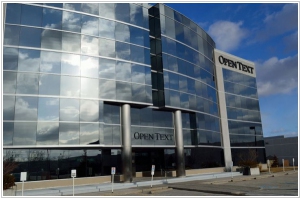
Forensic security and eDiscovery vendor Guidance Software has been acquired by content management company OpenText in a deal worth $240 million. OpenText has demonstrated a willingness to invest in strategic acquisitions to fill gaps in its portfolio, even if it means acquiring companies with overlapping functionality. A notable example is its acquisition of Documentum, an alternative enterprise content management firm, from EMC for $1.62 billion approximately a year ago. While this acquisition may introduce some overlapping functionality, it also grants OpenText access to new forensic tools—a domain previously unexplored by the company. According to Cheryl McKinnon, an analyst at Forrester Research specializing in the content management industry, this move expands OpenText's capabilities and expertise in forensics.
2016. OpenText acquires Documentum for $1.62 billion
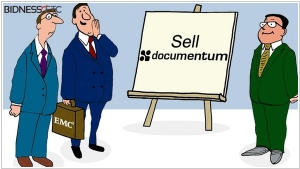
OpenText is set to purchase Dell EMC's enterprise content division, which includes Documentum, for a total of $1.62 billion. As per the agreement, OpenText will integrate the software, associated services, and employees of ECD into its operations. This acquisition comes shortly after Dell's official merger with EMC, where EMC's content management business was deemed incompatible. In 2003, EMC acquired Documentum for $1.7 billion, although it was widely known that EMC had been actively seeking a buyer for Documentum in recent years. With this acquisition, OpenText solidifies its position as a leading provider in Enterprise Information Management and now directly competes with IBM's FileNet.
2016. OpenText acquired Recommind
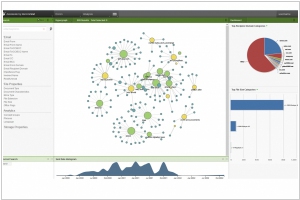
Just one week following the announcement of OpenText raising $600 million through the sale of senior debt notes to support future acquisitions, the company has made a significant investment of $163 million to acquire Recommind, a provider of e-discovery and information analytics solutions. Recommind offers a Software-as-a-Service (SaaS) platform along with managed services, including Axcelerate for e-discovery review and analysis, Perceptiv for contract analytics, and Decisiv for enterprise-wide information access. OpenText officials have expressed that the addition of e-discovery capabilities will complement their existing enterprise information management (EIM) solutions. Furthermore, the acquisition of Recommind will enhance OpenText's proficiency in cloud services and analytics, expanding their overall expertise in these domains.
2014. OpenText buys Big Data analytics provider Actuate for $330 Million

The global leader in Enterprise Content Management, OpenText, has completed the acquisition of Actuate, a prominent provider of Business Intelligence solutions. Actuate, renowned as "the BIRT company," specializes in Enterprise Business Intelligence and is closely associated with BIRT, which stands for "Business Intelligence Reporting Tools" and is an open-source project under the Eclipse Foundation. Actuate actively supports BIRT by offering the open-source IDE, while also developing BIRT iHub, a deployment platform that greatly enhances developer productivity when working on customer-facing applications. Additionally, Actuate's BIRT Analytics empowers users with self-service predictive analytics capabilities to improve customer engagement utilizing Big Data. Moreover, Actuate for CCM provides ECM architects with a seamless solution to transform, process, personalize, and archive high-volume content with ease.
2012. Open Text and Liferay create Dropbox clones
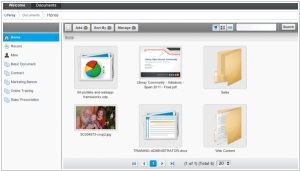
Could you have imagined just a few years ago that esteemed enterprise vendors like Open Text and Liferay, known for developing sophisticated enterprise content management systems (ECM), would emulate a seemingly straightforward consumer service like Dropbox? Surprisingly, it has become a reality. Even within large corporations that heavily rely on ECM, employees are ordinary individuals who desire a seamless working experience. They too seek systems that facilitate their work instead of hindering it, and many of them resort to using Dropbox despite IT administrators prohibiting its usage. As a result, a single solution emerges: to create a similar user-friendly service that abides by the corporate firewall. This very concept underlies the introduction of the new services: Open Text Tempo and Liferay Sync. These services enable file synchronization between desktop folders, web accounts, tablets, and smartphones, facilitating quick file sharing among colleagues while ensuring the files are stored securely on corporate servers. It's that simple.
2009. Open Text launches social interface
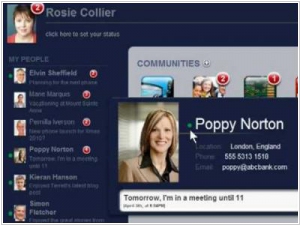
Open Text has recently introduced a new module for its ECM platform called Open Text Social Workplace, designed to assist organizations in implementing social tools. The company recognizes that traditional collaboration tools are no longer sufficient for intranet collaboration. Users now demand more user-friendly social tools and are willing to utilize them, even without IT compliance. However, it is crucial for companies that deploy these social tools to address potential security concerns. The new Open Text social interface offers an extensive array of collaboration tools, including communities, profiles, blogs, wikis, personal home pages, and mobile access (available for iPhone and BlackBerry). Furthermore, these features are accompanied by compliance management, similar to that used for managing enterprise email.
2009. Open Text buys Vignette for $310 million

Canadian ECM vendor Open Text has recently revealed its acquisition of Vignette, a renowned developer of enterprise portal and web content management (WCM) solutions. The acquisition amount for this deal is $310 million. Industry experts have observed that Open Text WCM and Vignette possess similar functionality. However, Vignette's WCM software is considered to be at a "slightly higher level" and may be specifically targeted towards larger customers. It is important to note that Open Text's existing WCM, now referred to as Open Text Web Solutions, is built upon RedDot CMS, which was acquired alongside Hummingbird in 2006.
2008. Vignette gears up WCM for Enterprise 2.0
Vignette, a web content management (WCM) software company, has joined the trend of enterprise content management (ECM) vendors re-tooling their platforms for Enterprise 2.0. The company has released a new set of community and social networking tools aimed at enhancing the web experience of online users. These tools, branded as "Vignette Community Services," allow companies to incorporate wikis, blogs, forums, tagging, usage analysis, and other social networking features into their websites. Vignette's strategy focuses on personalization 2.0, delivering tailored and relevant content to users as their personas shift across various digital environments. This move towards Web 2.0 capabilities reflects a growing emphasis on understanding web user behavior and optimizing engagement. Vignette faces challenges in its business, including lower-than-expected license sales and increased competition, which have led to a decline in revenue and a drop in share price. The company needs to address these issues alongside implementing Web 2.0 features.
2008. Open Text bets on Enterprise 2.0
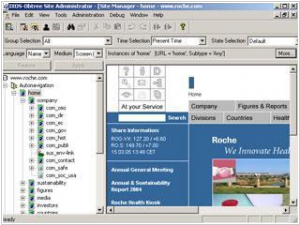
In its latest release of the ECM system, Open Text presents an Enterprise 2.0 solution that offers advanced collaboration features and incorporates new social tools like forums, blogs, and tags. According to Bill Forquer, Executive Vice President of Marketing at Open Text, utilizing Enterprise 2.0 tools for Content Management is crucial for achieving optimal outcomes. He notes that many organizations fail to integrate email as part of their ECM strategy, resulting in uncontrolled email archives. By implementing Enterprise 2.0 tools within ECM, this issue can be avoided. The new version of the ECM system allows users to swiftly create virtual workspaces that include web 2.0 tools such as forums and wikis. Additionally, Open Text has announced the launch of Livelink ECM Extended Collaboration, a solution designed to simplify the integration of Web 2.0 tools and applications for content management within the enterprise.

